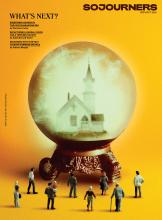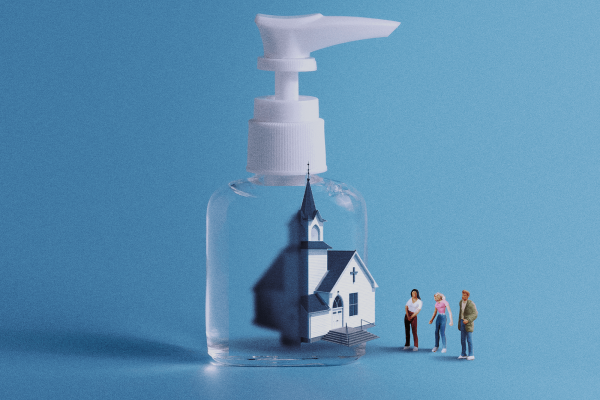WHEN MUCH OF THE UNITED STATES was ordered into a lockdown last March, pastors followed suit, shutting the doors of their sanctuaries, parish halls, and classrooms. For many pastors, choosing to close was an easy decision to make in the moment. It was an act of love centered on the health and safety of their congregants.
But what came after was harder. While some churches had been offering online services for years, many did not have the technology in place to make a seamless switch. For weeks, I watched the pastors of my parent’s church in Virginia pass a set of Apple AirPods back and forth while a church member propped an iPhone in place. And even those who were able to stream their services struggled with how to ensure certain members of their community were not left out. “We have so many people in our community who are in that 70-and-up range and for whom Sunday morning is the most life-giving part of their week,” Rev. Nick Coates of Red Deer Lake United Church in Calgary, Alberta, said. “And they [didn’t] have the ability to move online with us.”
For others, the moment presented more than a technological challenge, stirring theological questions as to what worship even was without the physical incarnation of the church body. Who would we be after more than a year of doing communion “with apple juice and Ritz crackers?” Pastor Peter Chin of Rainier Avenue Church in Seattle wondered. Now, with mask mandates lifted and vaccination rates on the rise, that moment has arrived. And pastors have returned to their buildings only to be met with more questions than answers and wondering where we go from here.
Read the Full Article

